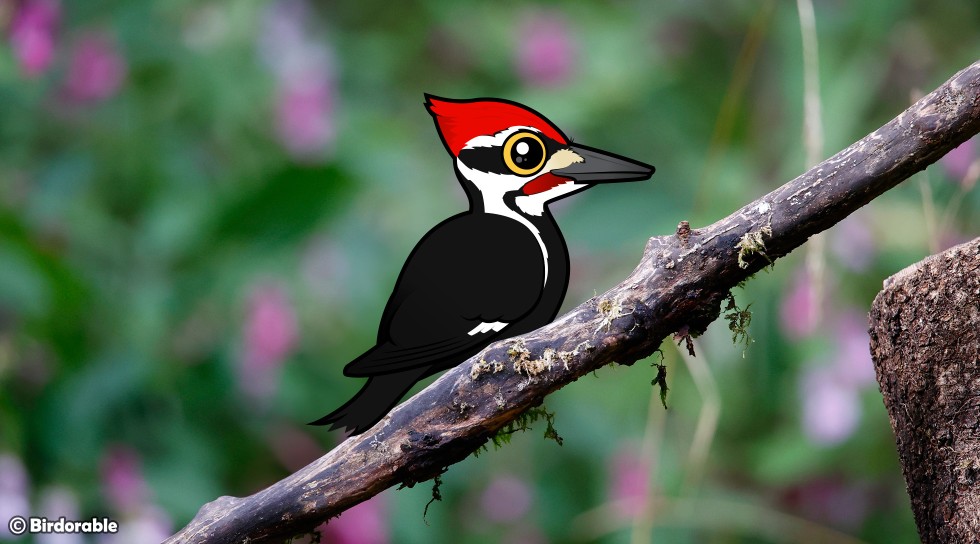Interesting Facts About Pileated Woodpeckers

The Pileated Woodpecker is one of the most striking and recognizable birds in North America. With its impressive size, distinctive markings, and unique behaviors, this bird is of interest to serious birdwatchers, curious nature lovers, and everyone in between. Here are some interesting facts about the Pileated Woodpecker:
That's a Big Bird!
The Pileated Woodpecker is one of the largest woodpeckers in North America. Measuring from 16 to 19 inches in length, with a wingspan of 26 to 30 inches. Its large size and striking appearance make it hard to miss in its natural habitat.
Excavation Experts
These woodpeckers are skilled excavators, using their strong, chisel-shaped bills to dig out large holes in trees. Due in part to the size of their impressive roosting and nesting cavities, they are an important keystone species in their environment. Their role as avian engineers highlights their importance in maintaining healthy forest ecosystems. Unused Pileated Woodpecker holes provide housing and shelter to other species, like Wood Ducks and American Martens.
Inspiring Appearance
This woodpecker is easily identified by its black body, white stripes running down its neck, and bright red crest. Males have a red stripe on their cheeks, while females do not, making it possible to distinguish between the sexes. The species bears a resemblance to the is-it-or-isn't-it-extinct Ivory-billed Woodpecker, which is/was also a very large bird with a distinctive crest. Certainly some recent alleged sightings of Ivory-billeds can be attributed to Pileated Woodpeckers seen under poor conditions. With its impressive and bold appearance, along with its boisterous call, the Pileated Woodpecker is thought to be the inspiration behind the cartoon character Woody Woodpecker!
What's In A Name?
The pronunciation of "Pileated" can vary based on regional differences and personal preferences, leading to two commonly accepted pronunciations: "PIE-lee-ay-tid" and "PILL-ee-ay-tid." Both pronunciations are widely recognized and accepted among birders, ornithologists, and the general public. This acceptance helps perpetuate the use of both versions without strong pressure to conform to a single pronunciation. Do you pronounce it Pileated, or Pileated? 😉
Flap, Flap, Glide
In flight, the Pileated Woodpecker exhibits a distinctive undulating pattern, characterized by a series of rapid wing flaps followed by a glide. This flight style, combined with their large size and striking plumage, makes them easily recognizable even from a distance.
A Wide-Ranging Woodpecker
The Pileated Woodpecker is found throughout a wide range across northern North America, from California up through Canada to the eastern and southeastern United States. They inhabit deciduous and mixed forests, often preferring areas with large, mature trees and plenty of deadwood, which provide ample foraging opportunities and nesting sites. Despite being a bird of mature forests, the Pileated Woodpecker has shown remarkable adaptability to changing environments. They can sometimes be found in suburban areas with large trees and wooded parks, demonstrating their ability to thrive in a variety of habitats.
Diet Diversity
While their primary diet consists of ants (especially carpenter ants) and beetles, Pileated Woodpeckers also consume a variety of other foods. They eat fruits, nuts, and berries, particularly in the winter when insect prey is scarce. They have also been known to visit backyard feeders, especially those offering suet.
A Popular Birdorable
The Pileated Woodpecker has been in our Birdorable family since December 5, 2011! Shop for Birdorable Pileated Woodpecker gifts for anyone who loves this bold, charismatic species.
















Comments
Leave a comment
Thank you!